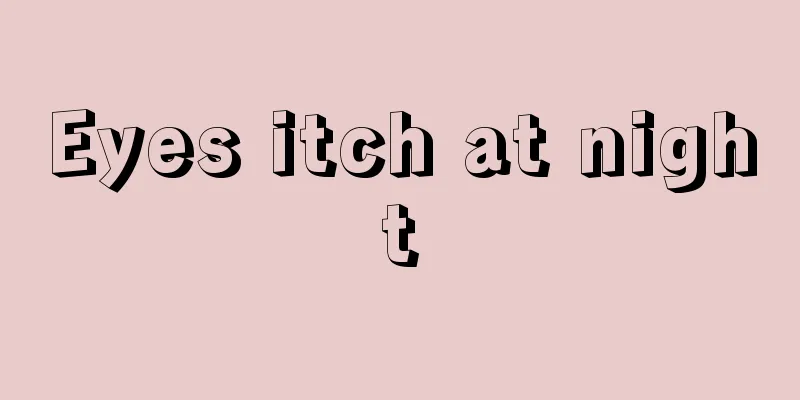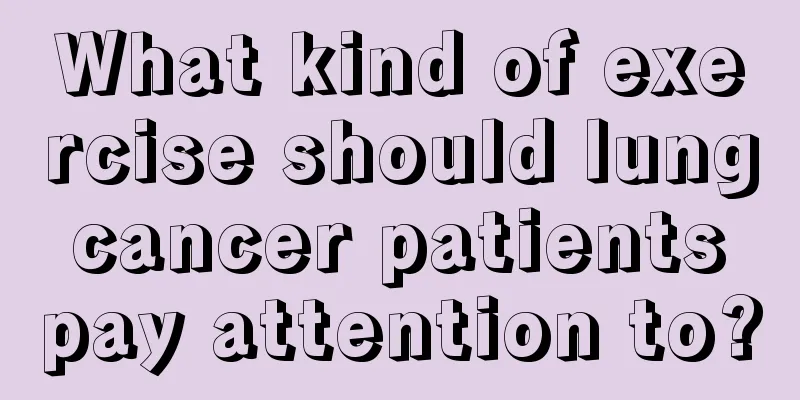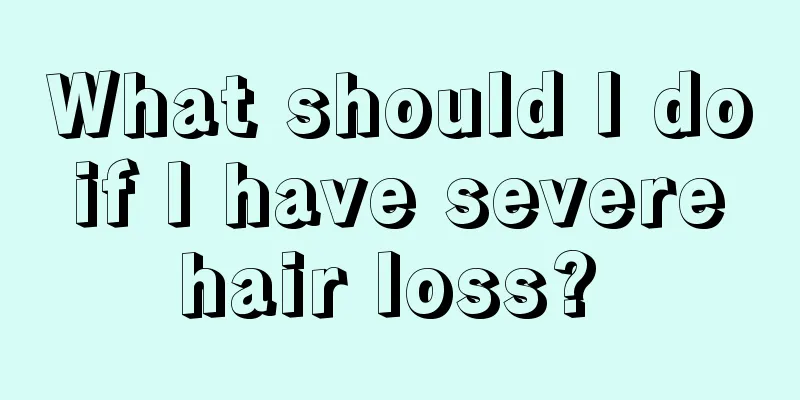Eyes itch at night

|
Sometimes our eyes feel itchy, but if we rub them with our hands, they will feel much better. But for some friends, their eyes will be very itchy at night, and even rubbing them hard will not relieve the pain. In fact, this is most likely allergic conjunctivitis. Generally speaking, allergic conjunctivitis is caused by the patient's exposure to allergens. To relieve the itchy eyes caused by allergic conjunctivitis, you can use medication. Allergic conjunctivitis, also known as allergic conjunctivitis, is a hypersensitivity reaction of the conjunctiva to external allergens. It mainly includes type I allergic reaction and type IV allergic reaction, among which allergic conjunctivitis caused by type I allergic reaction is the most common. Allergic conjunctivitis caused by type I allergic reaction is a rapid-onset type, mainly referring to allergic conjunctivitis including seasonal allergic conjunctivitis, perennial allergic conjunctivitis, giant papillary conjunctivitis, vernal keratoconjunctivitis, atopic keratoconjunctivitis, etc.; allergic conjunctivitis caused by type IV allergic reaction is a delayed-onset type, mainly including vesicular conjunctivitis. Clinical manifestations The most common symptom of allergic conjunctivitis is itchy eyes, which can occur in almost all patients with allergic conjunctivitis, among which vernal keratoconjunctivitis is usually the most obvious. Other symptoms include tearing, burning sensation, photophobia and increased secretions. The secretions are mostly mucous. Some more serious allergic conjunctivitis, such as vernal keratoconjunctivitis and atopic keratoconjunctivitis, can sometimes cause decreased vision. The most common sign of allergic conjunctivitis is conjunctival hyperemia. Conjunctival papillary hyperplasia is another common sign, with papillae mostly appearing on the upper eyelid conjunctiva. The hyperplastic papillae in giant papillary conjunctivitis and vernal keratoconjunctivitis have specific morphological characteristics. Atopic keratoconjunctivitis often presents with fibrotic (scarring) changes in the conjunctiva. Conjunctival edema may also occur during seasonal allergic conjunctivitis, which is particularly common in children. The most common corneal lesions are vernal keratoconjunctivitis and atopic keratoconjunctivitis. The purpose of treatment is to alleviate clinical symptoms and avoid sequelae, while attention should be paid to avoiding the occurrence of iatrogenic complications. 1. General treatment Allergen avoidance is the most ideal and effective treatment. Contact with possible allergens should be avoided as much as possible. For example, remove rags and blankets from the room, pay attention to bed hygiene, use pesticides to eliminate insect mites in the room, avoid contact with grass, tree flowers, etc. during the pollen transmission season, stop wearing or replace high-quality contact lenses and care solutions. Applying cold compresses to the eyelids may provide temporary relief. 2. Medication (1) Antihistamines Antihistamines are usually used topically. Commonly used eye drops include 0.1% Emedastine, 0.05% Levocabastine, 0.1% Olopatadine and 0.5% Ketorolac. If there are extraocular symptoms, oral medications can be used, but their effect is not as good as topical medications. Commonly used oral medications include diphenhydramine, chlorpheniramine, promethazine, etc. The combined use of antihistamines and vasoconstrictors, such as Runjianasol, can often achieve better therapeutic effects. (2) Commonly used mast cell stabilizers include disodium chromoglycate and nedocromil. Although mast cell stabilizers are less effective than antihistamines overall, they appear to be more effective in suppressing tearing. Best used before exposure to allergens. (3) Nonsteroidal anti-inflammatory drugs can be used in both the acute and intermittent stages of allergic diseases. They have shown certain therapeutic effects in relieving eye symptoms and signs such as itchy eyes, conjunctival congestion, and tearing. They can also reduce the dosage of hormones. Commonly used drugs include indomethacin (diclofenac sodium) and aspirin. (4) Commonly used drugs for topical use of vasoconstrictors include epinephrine naphazoline, oxymetazoline, tetrahydrozoline, etc., which can improve eye discomfort and reduce ocular surface congestion. (5) Glucocorticoids should only be used when other drugs are ineffective in treating severe allergic conjunctivitis, and the duration of use should not be too long to avoid complications such as cataracts, glaucoma virus infection, fungal infection, and delayed corneal epithelial healing. Commonly used ones include dexamethasone, betamethasone and fluorometholone. (6) The main immunosuppressants are cyclosporine A and FK506. For some severe cases of vernal keratoconjunctivitis that require the use of hormones, topical application of 2% cyclosporine A can quickly control local inflammation and reduce the amount of hormones used. However, relapse is common after medication discontinuation. 3. Desensitization treatment This method is mainly used for seasonal allergic conjunctivitis. Its therapeutic effect is often not ideal for other subtypes of allergic conjunctivitis, so it is rarely used. 4. Cryotherapy This method is mainly used for vernal keratoconjunctivitis. Cryotherapy is often used on the upper eyelid conjunctiva, lowering the temperature to -80°C to -30°C for 30 seconds. Cryotherapy can be repeated 2 to 3 times. 5. Psychotherapy Ocular allergic disease is an acute or chronic recurrent disease, and it is often very difficult to completely cure it. Therefore, it causes great psychological pressure on some patients. In particular, some children with vernal keratoconjunctivitis may have certain psychological disorders and should be paid attention to. |
<<: Unbearable pain after teeth whitening
Recommend
Can people with ovarian cancer exercise?
The incidence of ovarian cancer ranks third among...
Cost of chemotherapy for endometrial cancer
Endometrial cancer is one of the malignant tumors...
What are the causes of pancreatic cancer?
Pancreatic cancer is a common tumor. In recent ye...
Can rice washing water be used to remove acne
Few people can tolerate a face covered with pimpl...
What are the early symptoms of bone cancer
What are the early symptoms of bone cancer? Disea...
My back hurts so much when I wake up
Why do I feel severe back pain after waking up fr...
Can chemotherapy cure lung cancer
Chemotherapy is the use of drugs to treat cancer....
What food to eat for carbon monoxide poisoning
After carbon monoxide poisoning, patients need to...
How to prevent prostate cancer? What foods can prevent prostate cancer?
Prostate cancer is very harmful to men, and the i...
How does TCM understand prostate cancer
The traditional Chinese medicine's understand...
The right side of my head often hurts
Headache is both a symptom and a disease. I belie...
Are invisible braces harmful?
Invisible braces are used to correct teeth. When ...
Effective medicinal diet to improve sleep in patients with brain cancer
The nervous system of brain cancer patients is se...
What are the traditional Chinese medicine remedies for treating warts?
Warts are a type of skin growth mainly caused by ...
What gifts do girls hope to receive_What gifts do girls like to receive
Probably the thing girls want to receive most is ...









